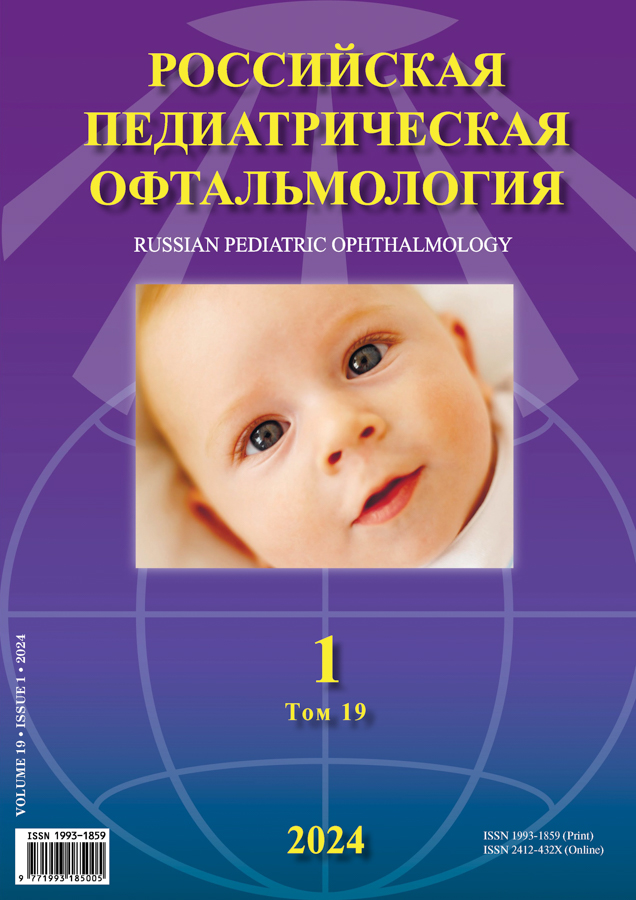Assessment of the toxic effect of the medical glue «Sulfacrylate» in M-22 cell culture
- Authors: Filatova I.A.1, Soldatkina O.V.1, Makarov M.S.2, Borovkova N.V.2,3,4, Storozheva M.V.2, Ponomarev I.N.2
-
Affiliations:
- Helmholtz National Medical Research Center for Eye Diseases
- N.V. Sklifosovsky Research Institute for Emergency Medicine
- Russian Medical Academy of Continuous Professional Education
- Pirogov Russian National Research Medical University
- Issue: Vol 19, No 1 (2024)
- Pages: 25-31
- Section: Original study article
- Published: 05.04.2024
- URL: https://ruspoj.com/1993-1859/article/view/625566
- DOI: https://doi.org/10.17816/rpoj625566
- ID: 625566
Cite item
Abstract
Sulfacrylate is a medical glue used in general and vascular surgery, traumatology, maxillofacial surgery, thoracic and abdominal surgery, and dentistry. To connect tissues in plastic ophthalmic surgery, the toxic properties of Sulfacrylate should be studied.
AIM: To evaluate the toxic effect of Sulfacrylate in human cell culture in vitro.
MATERIAL AND METHODS: In vitro studies were conducted on human fibroblast cultures of the M-22 line from the 20th passage. Sulfacrylate was used in the present study (registration certificate for a medical device no. FSR 2010/09805; December 31, 2010). A lyophilized bandage based on human type 1 collagen was used to fix the glue. The total number of cells at the bottom of wells, cell density at the bottom of wells and on collagen dressings (1 thousand cells per cm2), structural integrity of cells and their morphology, integrity of cell membranes were evaluated.
RESULTS: The toxic effect of collagen dressings with Sulfacrylate was limited by the size of the bandage. Collagen dressings with Sulfacrylate did not affect the viability of cells not in direct contact with the dressings and did not cause a pronounced decrease in the proliferative activity of cells. The minimum optimal dosage of adhesive for plastic ophthalmic surgery was 1–3 µkl.
CONCLUSION: The use of Sulfacrylate in plastic ophthalmic surgery is feasible; however, the volume used should be minimized.
Keywords
Full Text
About the authors
Irina A. Filatova
Helmholtz National Medical Research Center for Eye Diseases
Email: filatova13@yandex.ru
ORCID iD: 0000-0001-5449-4980
SPIN-code: 1797-9875
MD, Dr. Sci. (Medicine), Professor
Russian Federation, MoscowOlesya V. Soldatkina
Helmholtz National Medical Research Center for Eye Diseases
Author for correspondence.
Email: olesya.sold@mail.ru
MD, graduate student
Russian Federation, MoscowMaxim S. Makarov
N.V. Sklifosovsky Research Institute for Emergency Medicine
Email: makarovms@sklif.mos.ru
SPIN-code: 3543-5800
MD, researcher
Russian Federation, MoscowNatalya V. Borovkova
N.V. Sklifosovsky Research Institute for Emergency Medicine; Russian Medical Academy of Continuous Professional Education; Pirogov Russian National Research Medical University
Email: borovkovanv@sklif.mos.ru
ORCID iD: 0000-0002-8897-7523
SPIN-code: 9339-2800
MD, Dr. Sci. (Medicine)
Russian Federation, Moscow; Moscow; MoscowMaya V. Storozheva
N.V. Sklifosovsky Research Institute for Emergency Medicine
Email: mayya.storozheva@yandex.ru
ORCID iD: 0000-0003-1927-2404
SPIN-code: 7789-3277
MD, researcher
Russian Federation, MoscowIvan N. Ponomarev
N.V. Sklifosovsky Research Institute for Emergency Medicine
Email: rzam@yandex.ru
ORCID iD: 0000-0002-2523-6939
SPIN-code: 4705-9314
MD, Cand. Sci. (Medicine)
Russian Federation, MoscowReferences
- Podoluzhny VI, Zaikov IN, Arinchev RS, et al. History of clinical and experimental use of biological and synthetic medical adhesives. Medicine in Kuzbass. 2008;7(3):12–14. (In Russ.) EDN: JVJQXL
- Patent RUS SU 668332 A /15.11.1983. Korshak VV, Polyakova AM, Mager KA, et al. Adhesive composition. Available from: https://patents.su/4-668332-kleevaya-kompoziciya.html Accessed: 04.02.2024. (In Russ.)
- Malygina NA. Cyanoacrylate adhesive compositions. Vestnik Altaiskogo gosudarstvennogo agrarnogo universiteta. 2003;9(1):143–145. (In Russ.) EDN: PEOFAB
- Molokov VD, Bolshedvorskaya NE. The method of using the composition «Sulfocrilat» and evaluation of its clinical efficacy in complex treatment of parodontitis. Siberian Medical Journal (Irkutsk). 2011;100(1):172–175. EDN: NQVIYR
- Patent RUS № 2144340С1/16.04.1996. Kornilaev PG, Plechev VV. Autoperitoneal composite graft for hernioplasty. Available from: https://patenton.ru/patent/SU1473147A1. Accessed: 02/04/2024. (In Russ.)
- Patent RUS for invention № 2747360/07.08.2020. Pakholyuk YuP, Kravtsov YuA, Sichinava ZA. Method of suture-adhesive closure of skin wounds. Available from: https://findpatent.ru/patent/274/2747360.html. Accessed: 02/04/2024. (In Russ.)
- Arsutov DG, Pashtaev NP. Episcleral plombage in case of retina detachment according to sutureless technology using bio-glue «Sulphakrilat». Sibirskii konsilium. 2007;3(58):107–108.
- Arsyutov DG, Pashlayev NP. USE OF medical adhesives in the surgery of progressive myopia and retinal detachment. Meditsinskaya pomoshch’. 2008;(4):28–31. EDN: KAXRHR
- Trufanov SV. Cyanoacrylate adhesive in surgrical treatment of corneal perforation (clinical case). Vestnik Oftalmologii. 2020;136(5):232–236. doi: 10.17116/oftalma2020136052232
- Patent RUS № 2484472/10.06.2013. Makarov MS, Khvatov VB, Konyushko OI, et al. Method of morphofunctional assessment of the cellular component of biotransplants. Available from: https://patents/doc/RU2484472C1_20130610 (In Russ.)
- Sannikov AB, Shaydakov EV, Emelyanenko VM, Tolstikova TG. Experimental clinical study on the using of adhesive in the obliteration of varicose veins in humans. Ambulatornaya khirurgiya. 2020;(3–4):113–123. doi: 10.21518/1995-1477-2020-3-4-113-123
- Sanbaev AK, Miroshnichenko AA, Chabbarov RG, et al. Vein obliteration with cyanoacrylate glue as one of the methods of elimination of trunk reflux in patients with varicose veins of the lower extremities. Moscow Surgical Journal. 2022;(2):9–19. doi: 10.17238/2072-3180-2022-2-9-19
- Sannikov AB, Shajdakov EV, Emelynenko VM, et al. On the possibility of using the adhesive composition «Sulfacrylate» for obliteration of varicose veins of the lower extremities. Novosti Khirurgii. 2020;28(3):258–267. doi: 10.18484/2305-0047.2020.3.258
- Park I. Successful use of VenaSeal system for the treatment of large great saphenous vein of 2.84-cm diameter. Ann Surg Treat Res. 2018;94(4):219–221. doi: 10.4174/astr.2018.94.4.219
- Fokin AA, Nadvikov AI, Gasnikov AV, et al. Histological confirmation of biodegradation of «Sulfacrylate» glue after cyanoacrylate vein ablation according to the VAGOV technique at different periods. Angiology and Vascular Surgery. 2023;29(1):50–58. doi: 10.33029/1027-6661-2023-29-1-50-58
Supplementary files









